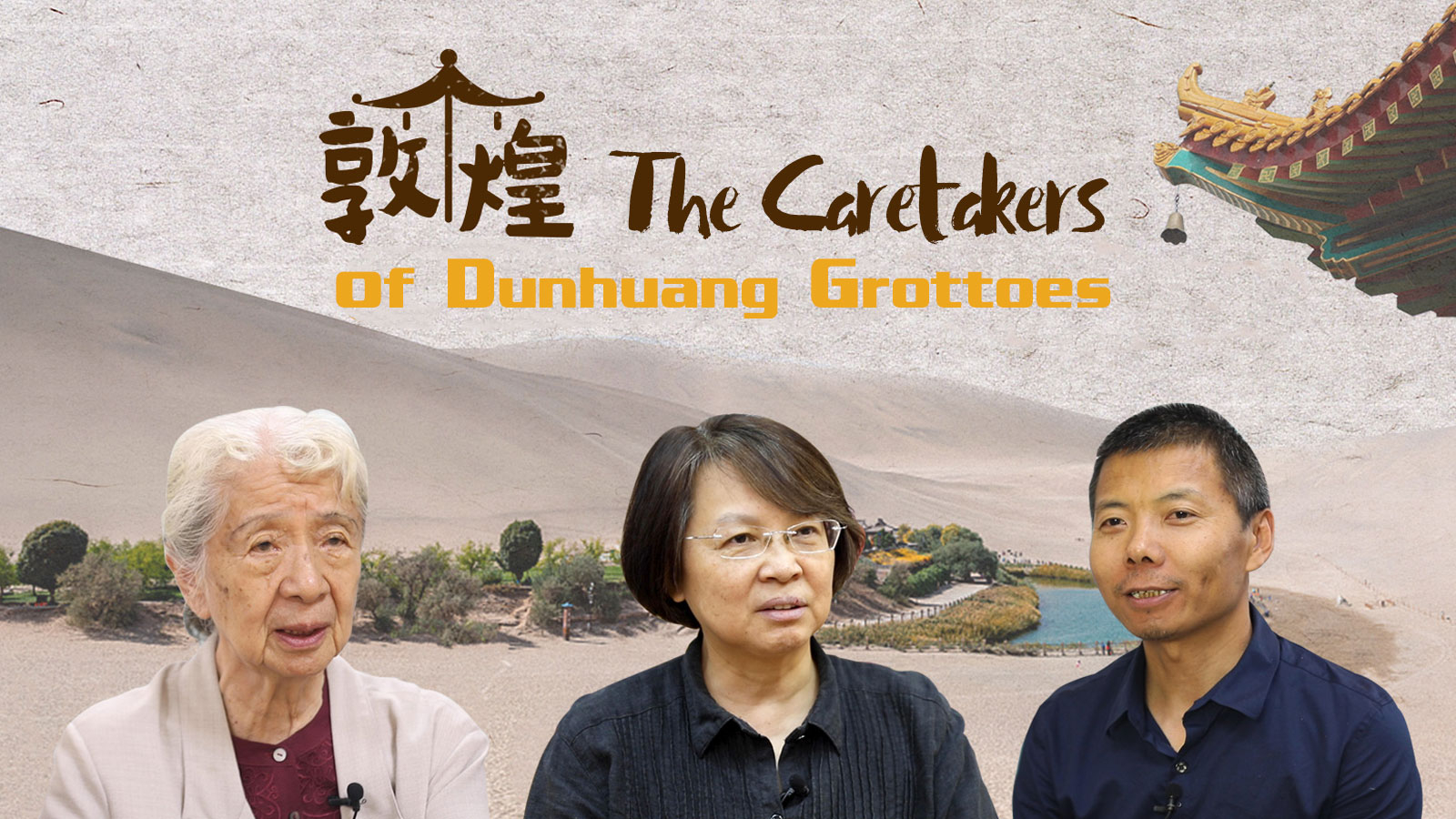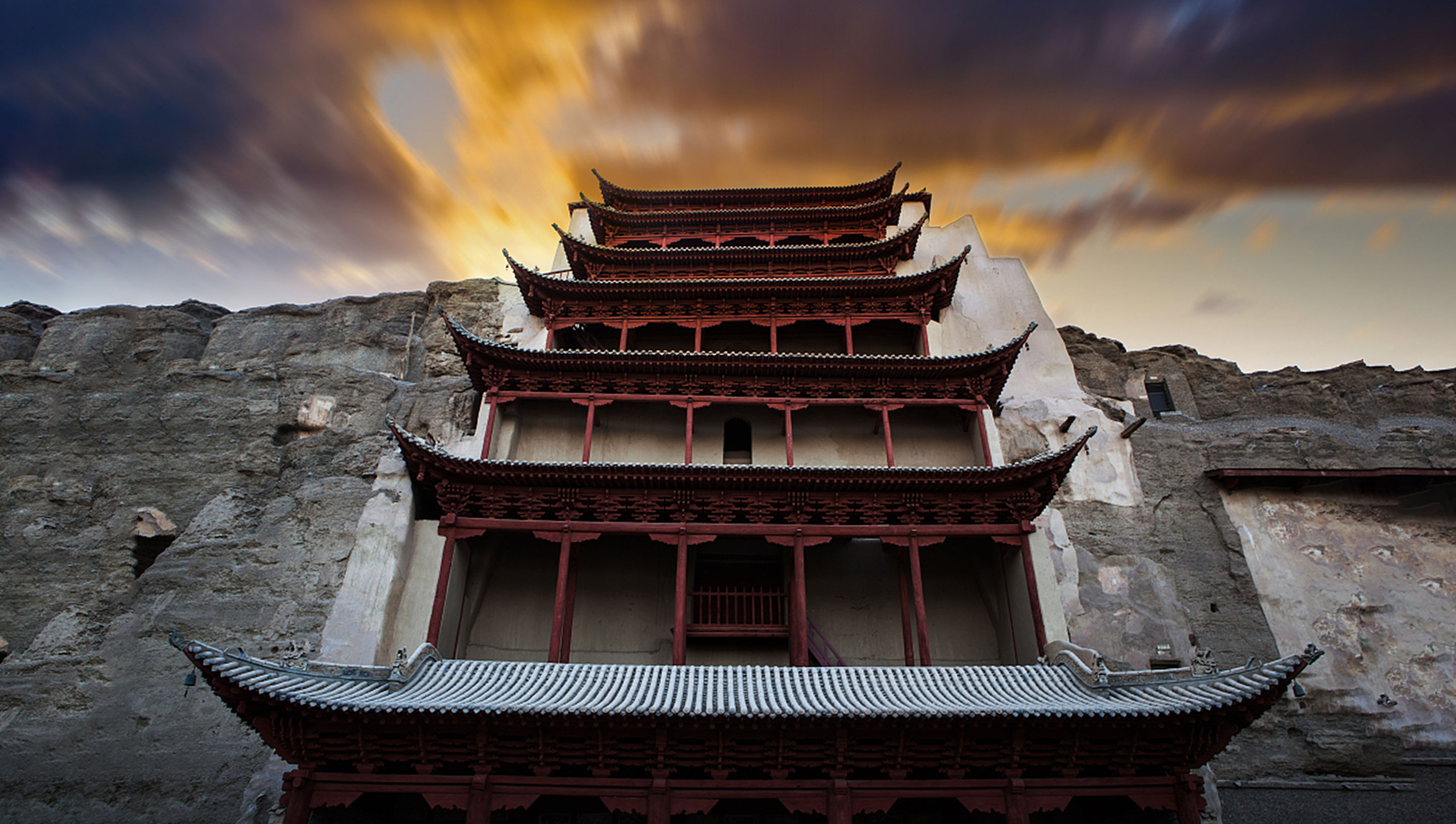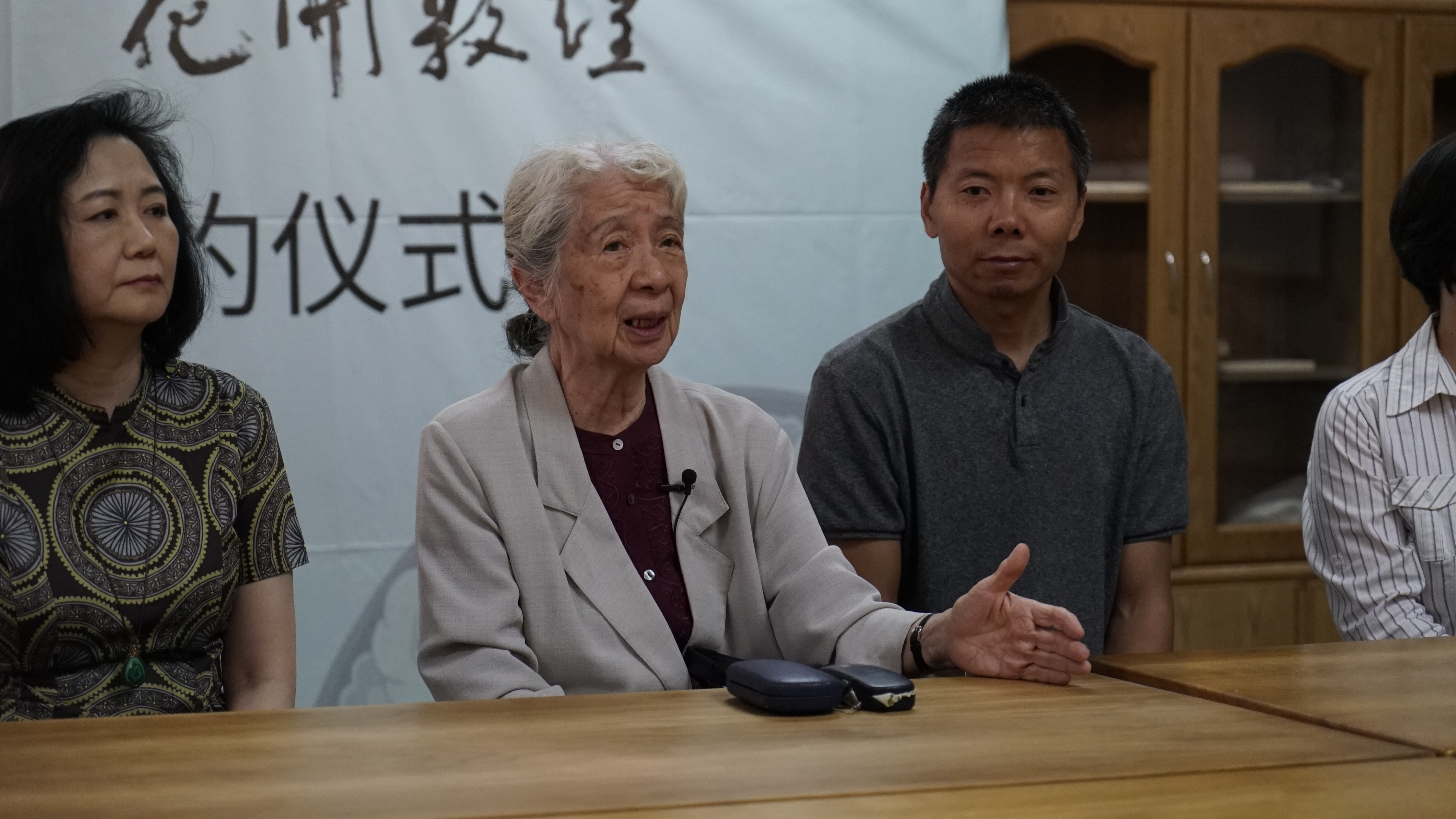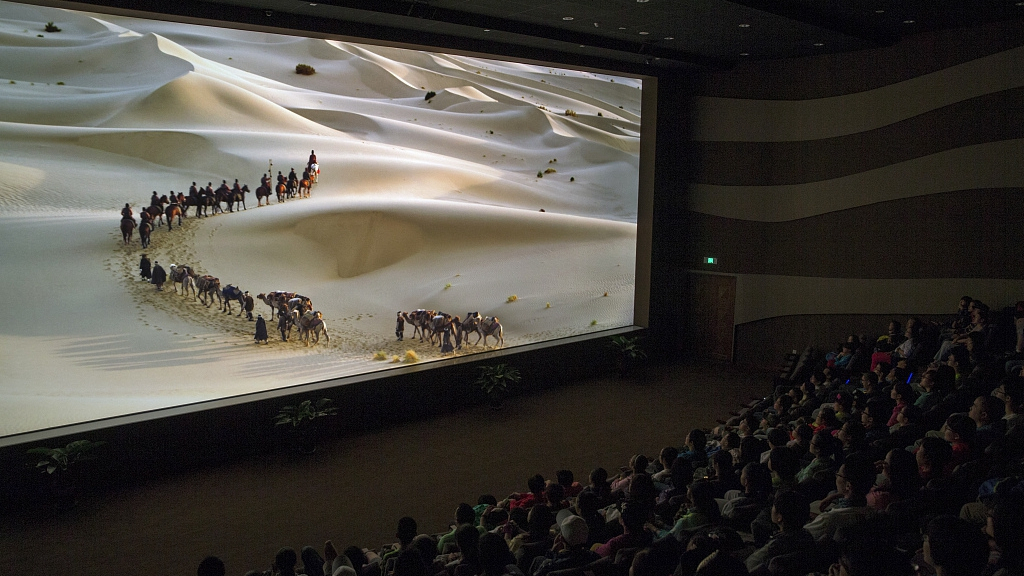

Dunhuang City, in northwest China's Gansu Province, is a pearl on the ancient Silk Road.
Dunhuang is more than a city's name, it's a witness to the history of cultural treasures that date back thousands of years.
The first of the city's eponymous grottoes was built in 344 AD, spawning a collection of caves that have become symbolic of the city.
According to a legend from the Tang Dynasty (618 - 907), a monk at the site had a vision of a thousand Buddhas under showers of golden rays. Inspired, he began building what today are known as the Mogao Grottoes, or the Caves of a Thousand Buddhas.

Mogao Grottoes, Dunhuang City, northwest China's Gansu Province. /VCG Photo
According to records, there are 735 caves housing 45,000 square meters of murals and 3,390 painted sculptures — all preserved to this day. Generations of Buddhist monks, painters, sculptors and worshipers carved their beliefs on the walls.
In 1900, Wang Yuanlu, a Taoist who maintained the caves, accidentally uncovered a hidden wealth of scriptures — over 50,000 in total. The discovery brought explorers from all around the world to the mysterious Eastern country.
In February 1908, French explorer Paul Pelliot and his team arrived in Dunhuang and took more than 6,000 cultural relics, initiating a dark period of time during which the treasures of Dunhuang were plundered.
In 1943, Chang Shuhong, a promising artist who had won several medals at salons in France, was inspired after reading about Dunhuang cave art and decided to relocate to the remote city.
Chang founded the Dunhuang Art Institute, which is now called the Dunhuang Academy. He gave up the prospect of furthering his art career and devoted himself to the protection and study of Dunhuang's treasures.
Dubbed as the "Guardian of Dunhuang," Chang spent his life in Dunhuang and made remarkable contributions to the study of the Mogao Grottoes. Over the last few decades, he was involved in the restoration of murals, collection of scattered cultural relics and recreation of a large number of murals.
"My father taught me how to sketch the murals, draw grids and copy murals," said Chang Shana, Chang Shuhong's daughter. "I learned a lot about murals and how their styles had evolved. That experience greatly influenced my career."

Chang Shana speaks during a lecture about her research on Dunhuang Grottoes patterns in Dunhuang Academy. /CGTN Photo
Shana was deeply influenced by her father, and today carries on his mission of preserving Dunhuang art.
More artists and scholars are joining the team of Dunhuang Grottoes caretakers.
Over the years, more than 2,000 square meters of Mogao murals have been copied, 15 life-sized cave replicas established, and copied works and manuscripts exhibited more than 100 times in more than 20 countries.
Modern technology has been adopted to help with the digitalization of the frescoes. The Dunhuang Academy spent four years on a preservation project called "Digital Dunhuang." It gathered, processed and saved Dunhuang frescoes and painted sculptures with digital technology to achieve the permanent preservation of Dunhuang artworks.

"A Thousand Years of the Mogao Caves" shown at the Digital Exhibition Center. /VCG Photo
At the Digital Exhibition Center, visitors are able to enjoy an immersive experience and witness the rebirth of the masterpieces. Two 30-minute short films document the history of the Mogao Grottoes, the Silk Road and the exclusive cave interiors that are not normally open to visitors.
Today, Dunhuang is what many generations expected it to be.
Travel Notice:
The total number of visitors is limited to 6,000 per day, so it is necessary to book your tickets in advance, especially during the peak season (May 1 to October 31). One can reserve a ticket online through the official website of Mogao Caves 30 days in advance.
Individual visitors who booked entrance tickets are required to provide their valid ID documents used for reservation to get their tickets. Foreign visitors can use their passports.
Videographer: Zhang Jiahua
Video editor: Wang Yutong
Video cover designed by Qu Bo

Copyright © 2018 CGTN. Beijing ICP prepared NO.16065310-3
Copyright © 2018 CGTN. Beijing ICP prepared NO.16065310-3